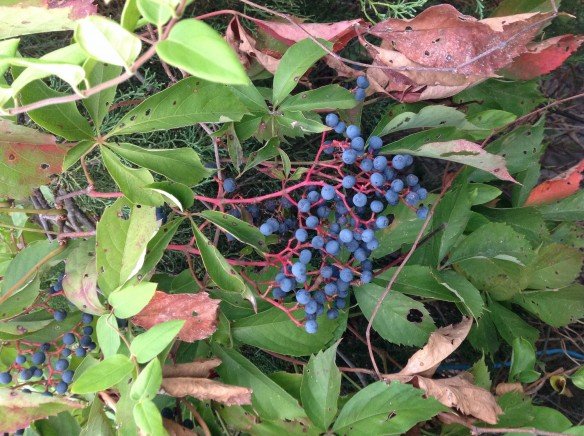
In October 1845, during the height of the Mormon persecutions in Illinois, four of the nine members of the DeLong family died. The DeLongs were impoverished converts who arrived in Nauvoo in time to join the lines to view the dead bodies of Joseph Smith and his brother Hyrum. After the parents and two children died, the rest were scattered. Of these, only one ended up traveling west as far as Utah. That four-year-old in a red flannel diaper and a straw hat would go on to be one of the first settlers of Panguitch, Utah.
I had heard as a youngling about how a neighbor had provided blueberries, from which Mother DeLong prepared a pie. But most of the children refused to eat the pie. Those who did, both parents and one son, all died of ague, violent illness. Mother DeLong gave birth the day her son and husband died, and both she and the new infant died soon thereafter.
The problem with the story was that blueberries have a very short season: in Illinois they are only available in July and August. Other members of the extended family criticized the oral history from the surviving family members because it didn’t agree with written records from this terrible time and the fact that Mother DeLong didn’t die the same day as her husband and son.
My personal experience as a pregnant mother taking lethal levels of drugs (in my case to treat the heart condition of my unborn son) helped me understand why a poison migh induce labor but not immediately kill.
That left only the identification of poisonous blue berries that could be mistaken for blueberries in early October in Illinois. I have been searching for a possible candidate berry for over a decade.
Then last night as I was getting out of the car for Back to School Night, I saw a collection of berries on the fence next to the parking lot. They were the size of blueberries and had the same dusty coating peculiar to blueberries. They are the berries of Virginia Creeper (Parthenocissus quinquefolia), and they are highly toxic.
I don’t know who might have gathered the legendary berries and brought them to the DeLong household, and whether or not these hypothetical individuals knew the berries were deadly. If the berries are what killed the DeLongs, I can imagine the scene with too-vivid an imagination. Initial delight at finding such a delightful treat, the disgust and spitting of the other children when the taste wasn’t quite right, leaving the responsible parents and one child to consume what had been so lovingly prepared.
In the wake of the deaths, the two oldest sons, living as farm hands to non-Mormon families, disappear from the record. I have researched enough to see how children with names as distinctly Mormon as “Moroni” would lie about their birthplace and otherwise try to hide their connection with the Mormons.
The three younger children were farmed out to other Mormon families, to prevent them from dying of starvation. Surviving corrrespondence regarding the fate of the children paints a stark picture of a painfully oppressed people who expected God to wreak vengeance on the oppressors.
I will not know until some post-mortal future what actually happened. But at least now I know that there is a berry that fits the story told by traumatized children, of how their parents came to die during the Illinois Wolf Hunts.
As for me, as I pull the Virginia Creeper from the brick walls of my home as the years pass, I will have one more thing to contemplate as I perform this constant labor.